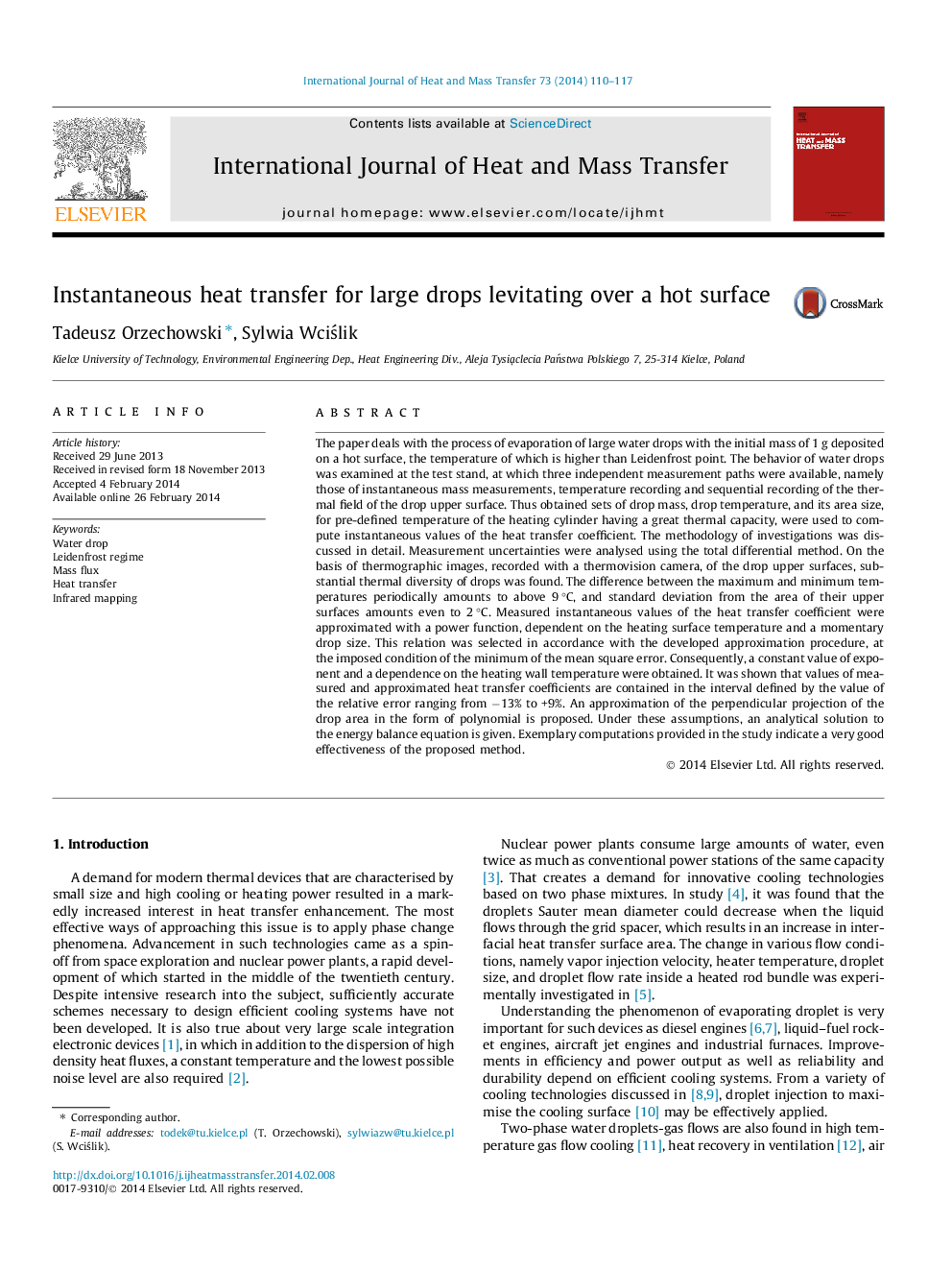| Article ID | Journal | Published Year | Pages | File Type |
|---|---|---|---|---|
| 657494 | International Journal of Heat and Mass Transfer | 2014 | 8 Pages |
Abstract
The paper deals with the process of evaporation of large water drops with the initial mass of 1 g deposited on a hot surface, the temperature of which is higher than Leidenfrost point. The behavior of water drops was examined at the test stand, at which three independent measurement paths were available, namely those of instantaneous mass measurements, temperature recording and sequential recording of the thermal field of the drop upper surface. Thus obtained sets of drop mass, drop temperature, and its area size, for pre-defined temperature of the heating cylinder having a great thermal capacity, were used to compute instantaneous values of the heat transfer coefficient. The methodology of investigations was discussed in detail. Measurement uncertainties were analysed using the total differential method. On the basis of thermographic images, recorded with a thermovision camera, of the drop upper surfaces, substantial thermal diversity of drops was found. The difference between the maximum and minimum temperatures periodically amounts to above 9 °C, and standard deviation from the area of their upper surfaces amounts even to 2 °C. Measured instantaneous values of the heat transfer coefficient were approximated with a power function, dependent on the heating surface temperature and a momentary drop size. This relation was selected in accordance with the developed approximation procedure, at the imposed condition of the minimum of the mean square error. Consequently, a constant value of exponent and a dependence on the heating wall temperature were obtained. It was shown that values of measured and approximated heat transfer coefficients are contained in the interval defined by the value of the relative error ranging from â13% to +9%. An approximation of the perpendicular projection of the drop area in the form of polynomial is proposed. Under these assumptions, an analytical solution to the energy balance equation is given. Exemplary computations provided in the study indicate a very good effectiveness of the proposed method.
Related Topics
Physical Sciences and Engineering
Chemical Engineering
Fluid Flow and Transfer Processes
Authors
Tadeusz Orzechowski, Sylwia WciÅlik,
